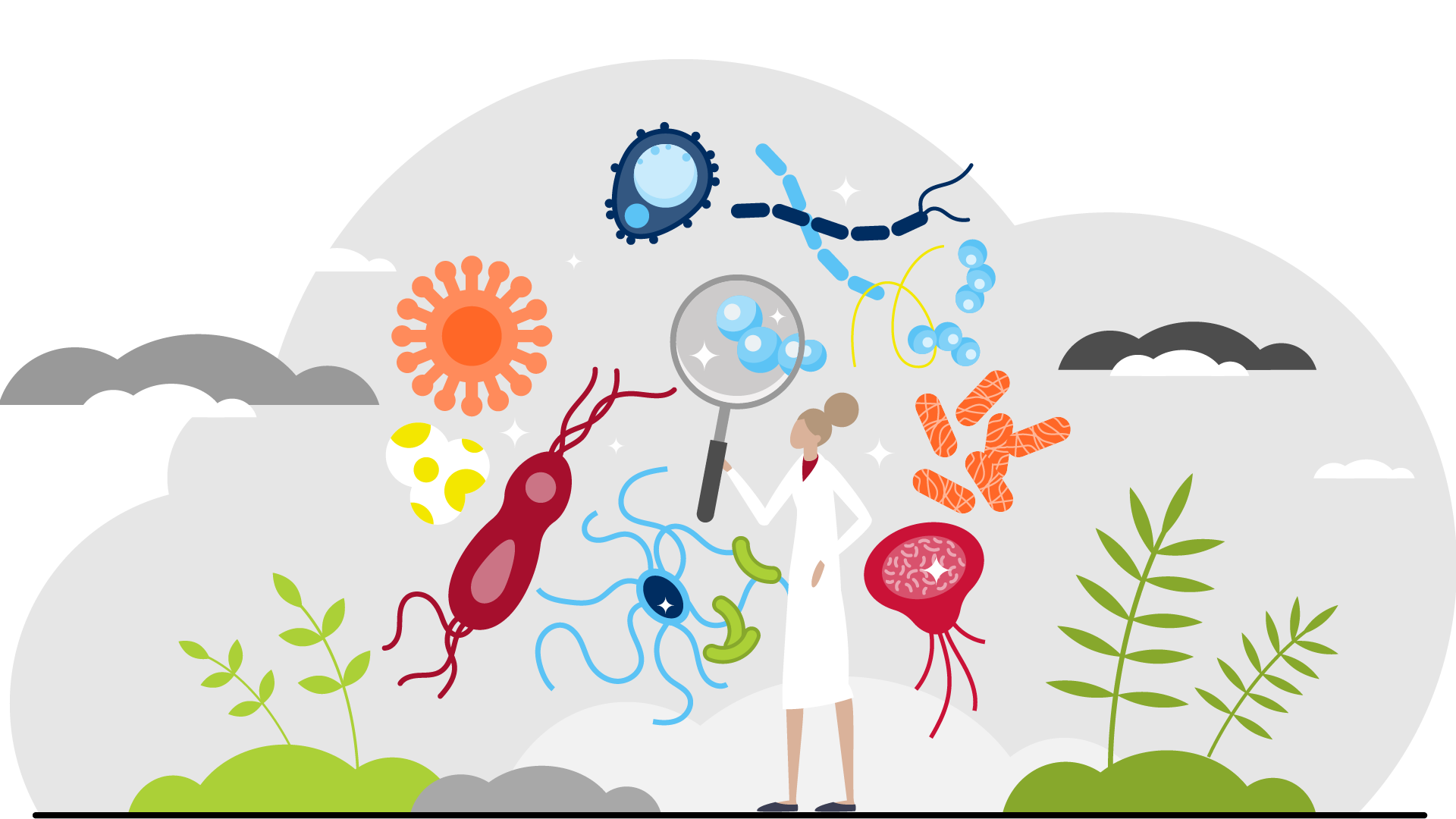Microbiome basics
-
Microbiome = all microbes + their genomes + the environment they occupy.
-
Humans have ~38 trillion microbial cells (more than human cells).
-
Major phyla:
-
Firmicutes (Gram+ anaerobes)
-
Bacteroidetes (Gram– anaerobes)
-
Proteobacteria (Gram– facultative rods)
-
Actinobacteria (Gram+ bacilli)
-
Normal flora by site
-
Carrier state: colonization with potential pathogen (e.g., S. aureus).
|
Body site |
Common flora |
|
Skin |
Staph epidermidis, Corynebacterium, Propionibacterium |
|
Mouth/Nasopharynx |
Strep mitis, Neisseria, anaerobes |
|
Colon |
Bacteroides, Enterobacteriaceae, Enterococci, anaerobes |
|
Vagina |
Lactobacillus, Strep, Corynebacterium, anaerobes |
Functions of the microbiome
-
Nutrition:
-
Fermentation → SCFAs (butyrate, acetate)
-
Vitamin synthesis (e.g., B vitamins, K)
-
-
Immune system bidirectional influence:
-
Immune system maturation: evidence: Germ-free mice show impaired immunity (↓ IgA, ↓ dendritic cells)
-
Colonization resistance: normal flora prevent pathogen overgrowth.
-
Microbiota influence T-cell differentiation (Th1, Th2, Treg)
-
Gut–immune–brain axis: Evidence: SCFAs affect CNS, mood, inflammation; dysbiosis linked to autism, depression, Parkinson’s
-
Dysbiosis and disease
-
Definite links:
-
C. difficile infection
-
Bacterial vaginosis
-
Yeast infections
-
-
Associated conditions:
-
Obesity, IBD, diabetes, cardiovascular disease, depression
-
Antibiotics and microbiome disruption
-
Antibiotics can:
-
Kill beneficial flora
-
Reduce colonization resistance
-
Promote overgrowth of pathogens (e.g., C. difficile)
-
-
Antibiotic overuse:
-
270 million prescriptions/year in US
-
~30% unnecessary
-
↑ resistance, ↑ adverse effects
-
Antimicrobial stewardship principles
-
4 D’s:
-
Right Drug
-
Right Dose
-
De-escalation
-
Right Duration
-
-
Do:
-
Get cultures
-
Use narrow-spectrum agents
-
Follow guidelines
-
-
Don’t:
-
Treat colonization
-
Use antibiotics for viral infections
-
Continue broad-spectrum unnecessarily
-
USMLE tips
-
Know normal flora by site.
-
Understand colonization resistance and carrier state.
-
Recognize SCFAs as key modulators/communicators between microbiome and host in immunity and metabolism.
-
Link antibiotic use to dysbiosis and resistance.
-
Apply stewardship principles in clinical scenarios.
Learning goals
- Explain virulence and how it relates to benign versus pathogenic microorganisms
- Name common bacterial species that are considered normal human flora for each of the following locations: skin, mouth, colon, and vagina, and describe how these organisms enhance host immunity
- Explain the impact of a distorted microbiome, related to antibiotic exposure or hospitalization, and identify diseases caused by dysbiosis
- Describe consequences of inappropriate antibiotic use and identify key strategies of antimicrobial stewardship
Required pre-class materials
-
Sherris Medical Microbiology, 8e
Chapter 1: Infection—Basic Concepts
1 2 3 The Human Microbiota -
Sherris Medical Microbiology, 8e
Chapter 23: Antibacterial Agents and Resistance
4 Antimicrobial Stewardship
Study materials
These materials are not required; they are supplementary to large-group session. They are intended as a curated guide to content focused on the learning objectives. There are both textbook and video resources for this session for students to use per their preference. For each reference, I have designated the learning goal addressed with a learning goal icon and and number.
Click the book icons below to go to the library resources listed.
-
Review of Medical Microbiology & Immunology: A Guide to Clinical Infectious Diseases, 17e
1 2 3 Chapter 6: The Human Microbiome
-
RWJF videos
Intro to Microbiology: ClinID Rx4 This video is also pertinent to Pharmacology I: Introduction to Antimicrobial therapy
-
Harrison's Principles of Internal Medicine, 21e
1 2 3 Chapter 459: The Human Microbiome
This is considered by many to be “The Bible” of Internal Medicine. It presents the topic from a slightly different angle.
-
-
The section on the microbiota and disease is most relevant.
-
-
1 2 3 Chapter 2: The Human Microbiome of Local Body Sites and Their Unique Biology
This text is a more dense infectious disease textbook; it is included for students who may have more interest in the topic than what is currently covered in our short session

